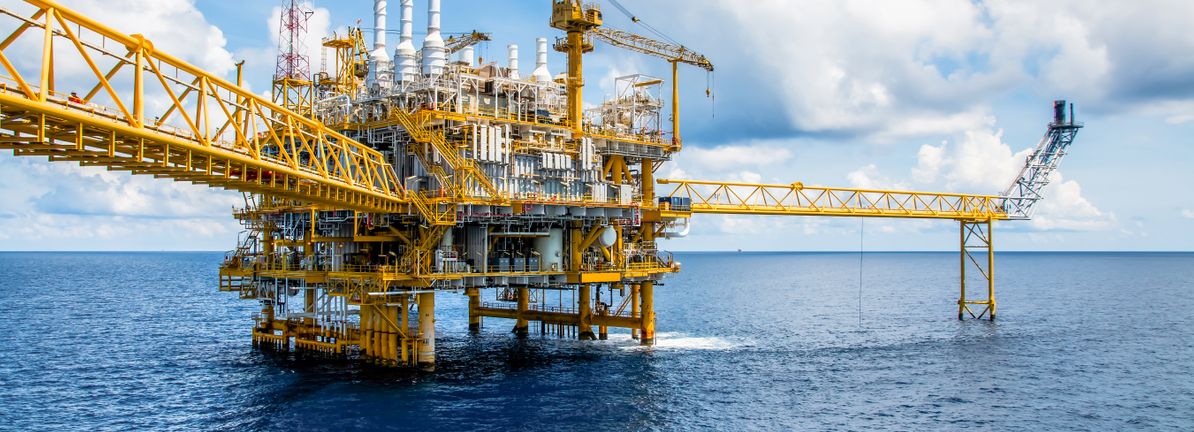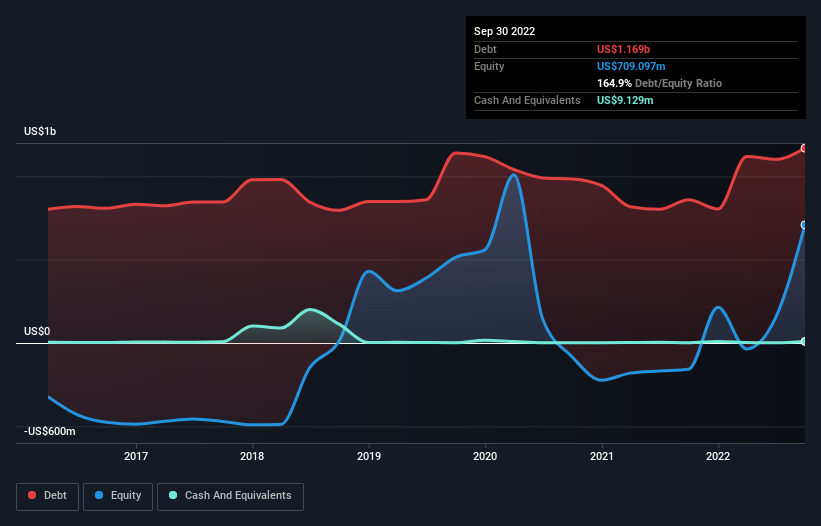
Howard Marks put it nicely when he said that, rather than worrying about share price volatility, ‘The possibility of permanent loss is the risk I worry about… and every practical investor I know worries about.’ It’s only natural to consider a company’s balance sheet when you examine how risky it is, since debt is often involved when a business collapses. As with many other companies Northern Oil and Gas, Inc. (NYSE:NOG) makes use of debt. But the more important question is: how much risk is that debt creating?
When Is Debt A Problem?
Debt assists a business until the business has trouble paying it off, either with new capital or with free cash flow. In the worst case scenario, a company can go bankrupt if it cannot pay its creditors. However, a more frequent (but still costly) occurrence is where a company must issue shares at bargain-basement prices, permanently diluting shareholders, just to shore up its balance sheet. Having said that, the most common situation is where a company manages its debt reasonably well – and to its own advantage. The first thing to do when considering how much debt a business uses is to look at its cash and debt together.
View our latest analysis for Northern Oil and Gas
How Much Debt Does Northern Oil and Gas Carry?
The image below, which you can click on for greater detail, shows that at September 2022 Northern Oil and Gas had debt of US$1.17b, up from US$859.0m in one year. Net debt is about the same, since the it doesn’t have much cash.

How Healthy Is Northern Oil and Gas’ Balance Sheet?
The latest balance sheet data shows that Northern Oil and Gas had liabilities of US$381.7m due within a year, and liabilities of US$1.38b falling due after that. Offsetting these obligations, it had cash of US$9.13m as well as receivables valued at US$318.1m due within 12 months. So its liabilities outweigh the sum of its cash and (near-term) receivables by US$1.44b.
This deficit isn’t so bad because Northern Oil and Gas is worth US$2.62b, and thus could probably raise enough capital to shore up its balance sheet, if the need arose. But we definitely want to keep our eyes open to indications that its debt is bringing too much risk.
We measure a company’s debt load relative to its earnings power by looking at its net debt divided by its earnings before interest, tax, depreciation, and amortization (EBITDA) and by calculating how easily its earnings before interest and tax (EBIT) cover its interest expense (interest cover). Thus we consider debt relative to earnings both with and without depreciation and amortization expenses.
Northern Oil and Gas’s net debt is only 1.1 times its EBITDA. And its EBIT easily covers its interest expense, being 12.7 times the size. So you could argue it is no more threatened by its debt than an elephant is by a mouse. Although Northern Oil and Gas made a loss at the EBIT level, last year, it was also good to see that it generated US$891m in EBIT over the last twelve months. When analysing debt levels, the balance sheet is the obvious place to start. But ultimately the future profitability of the business will decide if Northern Oil and Gas can strengthen its balance sheet over time. So if you’re focused on the future you can check out this free report showing analyst profit forecasts.
Finally, a business needs free cash flow to pay off debt; accounting profits just don’t cut it. So it’s worth checking how much of the earnings before interest and tax (EBIT) is backed by free cash flow. Over the last year, Northern Oil and Gas saw substantial negative free cash flow, in total. While that may be a result of expenditure for growth, it does make the debt far more risky.
Our View
Neither Northern Oil and Gas’s ability to convert EBIT to free cash flow nor its level of total liabilities gave us confidence in its ability to take on more debt. But its interest cover tells a very different story, and suggests some resilience. When we consider all the factors discussed, it seems to us that Northern Oil and Gas is taking some risks with its use of debt. While that debt can boost returns, we think the company has enough leverage now. There’s no doubt that we learn most about debt from the balance sheet. But ultimately, every company can contain risks that exist outside of the balance sheet. Case in point: We’ve spotted 5 warning signs for Northern Oil and Gas you should be aware of, and 1 of them is a bit unpleasant.
If you’re interested in investing in businesses that can grow profits without the burden of debt, then check out this free list of growing businesses that have net cash on the balance sheet.
What are the risks and opportunities for Northern Oil and Gas?
Northern Oil and Gas, Inc., an independent energy company, engages in the acquisition, exploration, exploitation, development, and production of crude oil and natural gas properties in the United States.
Rewards
-
Trading at 78.1% below our estimate of its fair value
-
Earnings are forecast to grow 28.47% per year
-
Became profitable this year
Risks
-
High level of non-cash earnings
-
Shareholders have been diluted in the past year
-
Significant insider selling over the past 3 months
-
Has a high level of debt
Have feedback on this article? Concerned about the content? Get in touch with us directly. Alternatively, email editorial-team (at) simplywallst.com.
This article by Simply Wall St is general in nature. We provide commentary based on historical data and analyst forecasts only using an unbiased methodology and our articles are not intended to be financial advice. It does not constitute a recommendation to buy or sell any stock, and does not take account of your objectives, or your financial situation. We aim to bring you long-term focused analysis driven by fundamental data. Note that our analysis may not factor in the latest price-sensitive company announcements or qualitative material. Simply Wall St has no position in any stocks mentioned.
Source link
